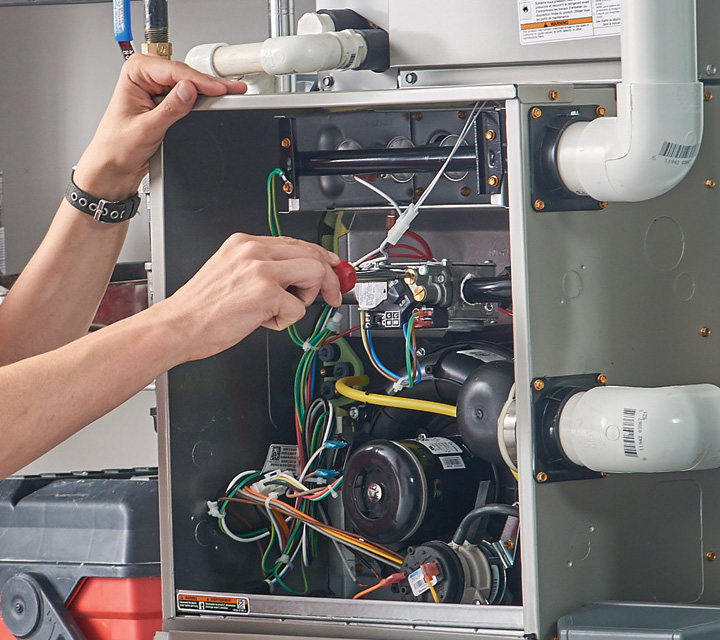
A well-functioning furnace is essential for comfortable living during the cold winter months. However, like any mechanical device, furnaces can experience breakdowns and malfunctions. When your furnace repair starts acting up, it’s crucial to address the issue promptly to avoid discomfort and potential safety hazards.
Common Furnace Problems and Solutions
Here are some common furnace problems and potential solutions:
- No Heat:
- Check the Thermostat: Ensure it’s set to “Heat” and the temperature is above the current room temperature.
- Inspect the Circuit Breaker: Verify that the circuit breaker hasn’t tripped.
- Examine the Pilot Light: If your furnace has a pilot light, make sure it’s lit. If not, relight it according to the manufacturer’s instructions.
- Clean or Replace the Air Filter: A clogged filter can restrict airflow and reduce heating efficiency.
- Strange Noises:
- Loose Parts: If you hear rattling or clunking noises, it could be due to loose parts. Consult a professional for inspection and repair.
- Worn-Out Blower Motor: A worn-out blower motor can produce unusual noises. Replacement may be necessary.
- Inconsistent Heating:
- Faulty Thermostat: A malfunctioning thermostat can lead to inconsistent heating. Consider replacing it.
- Clogged Vents: Obstructed vents can hinder airflow and affect heating distribution. Clear any blockages.
- Ductwork Issues: Leaky or damaged ductwork can cause significant heat loss. Professional inspection and repair are recommended.
When to Call a Professional
While some minor furnace issues can be addressed with DIY solutions, it’s advisable to call a qualified HVAC technician for the following situations:
- Complex Repairs: If you’re unsure about the cause of the problem or the necessary repairs, it’s best to leave it to the experts.
- Safety Concerns: Issues like gas leaks or electrical problems should be handled by professionals to prevent accidents.
- Regular Maintenance: Schedule annual furnace tune-ups to ensure optimal performance, energy efficiency, and longevity.
Preventive Maintenance Tips
To minimize the need for furnace repairs and keep your system running smoothly, consider these preventive maintenance tips:
- Change the Air Filter Regularly: Replace the air filter every 1-3 months, or more frequently if you have pets or allergies.
- Clean the Furnace: Remove dust and debris from the furnace’s interior to improve airflow and efficiency.
- Inspect the Ductwork: Check for leaks, cracks, or blockages in the ductwork and repair or seal them as needed.
- Schedule Annual Tune-ups: Professional technicians can identify and address potential issues before they escalate.
By following these guidelines and seeking professional help when necessary, you can ensure that your furnace operates reliably and efficiently, keeping your home warm and comfortable throughout the winter season.